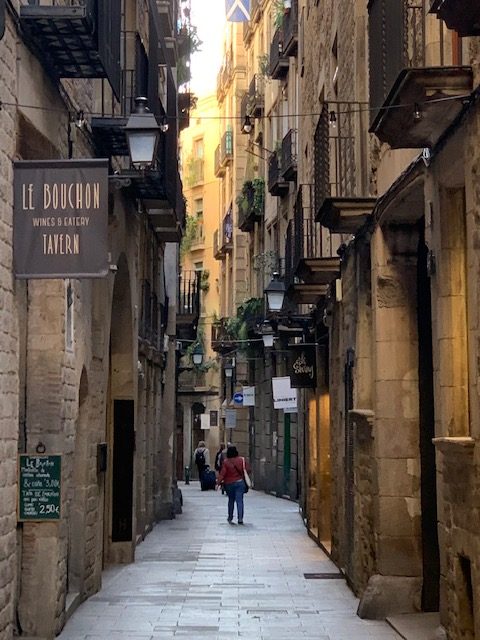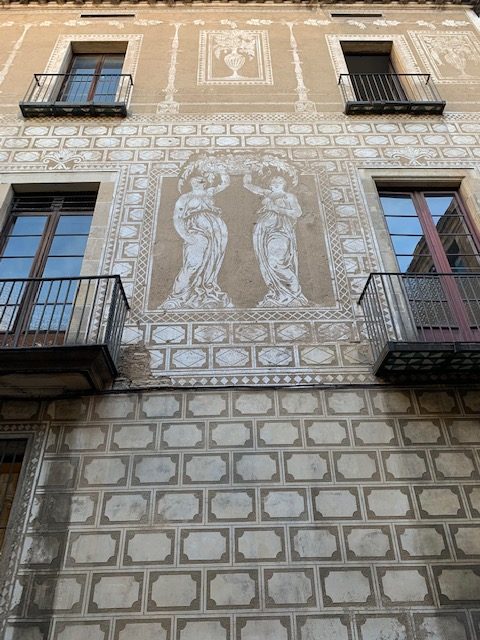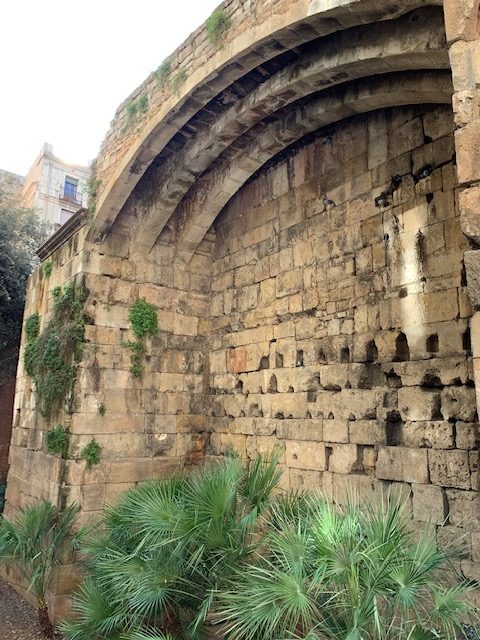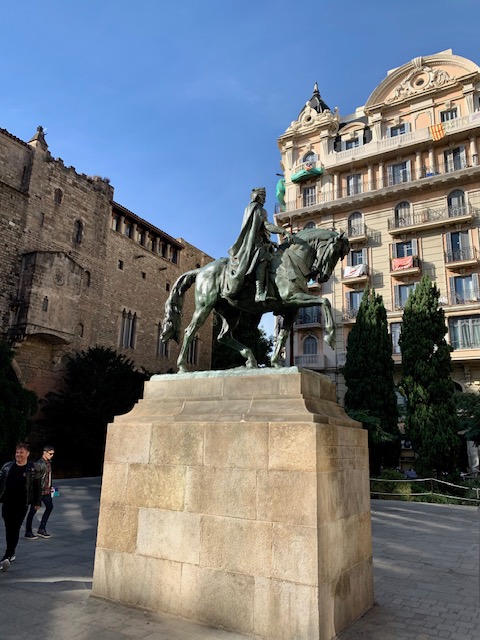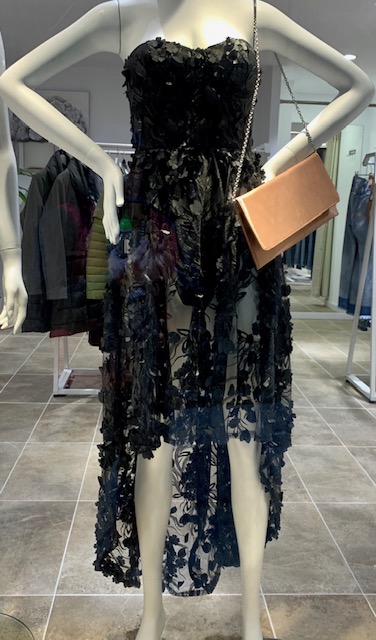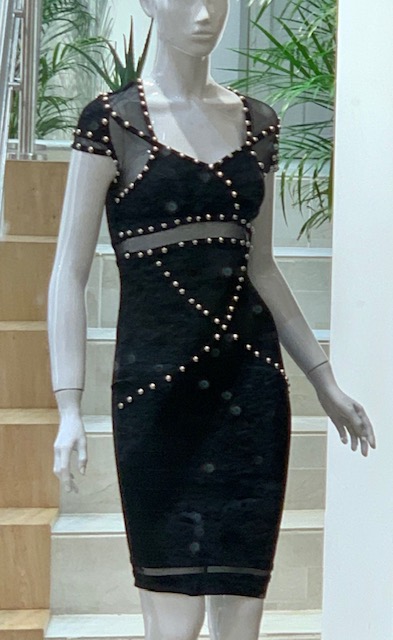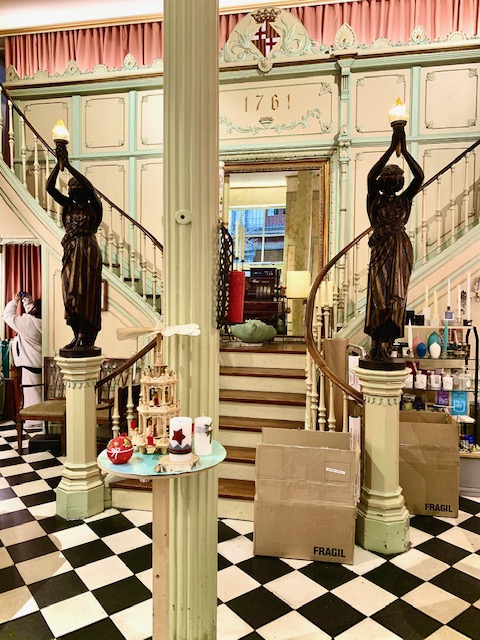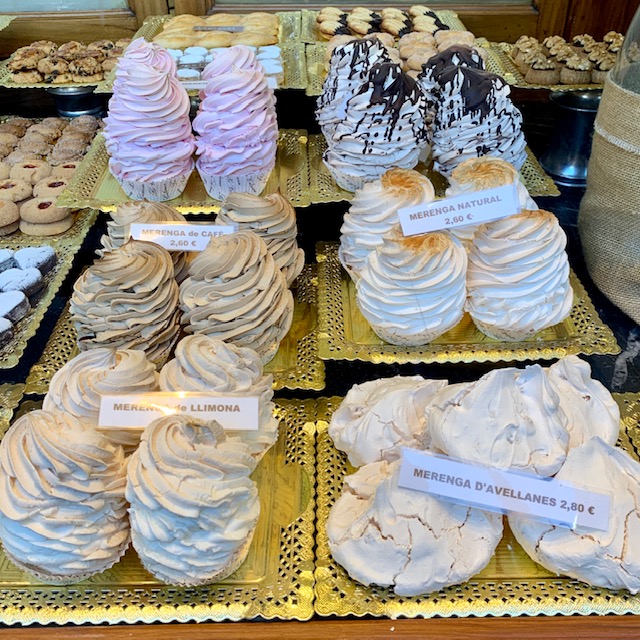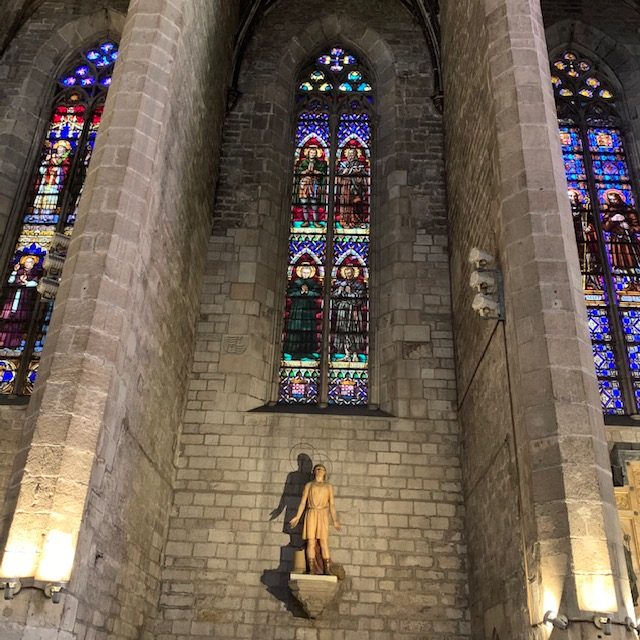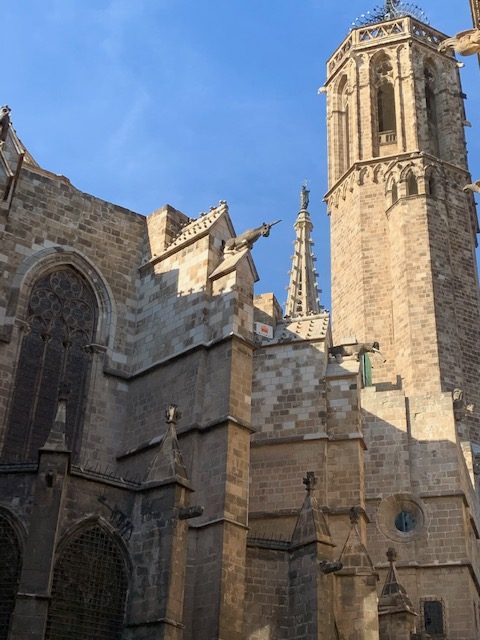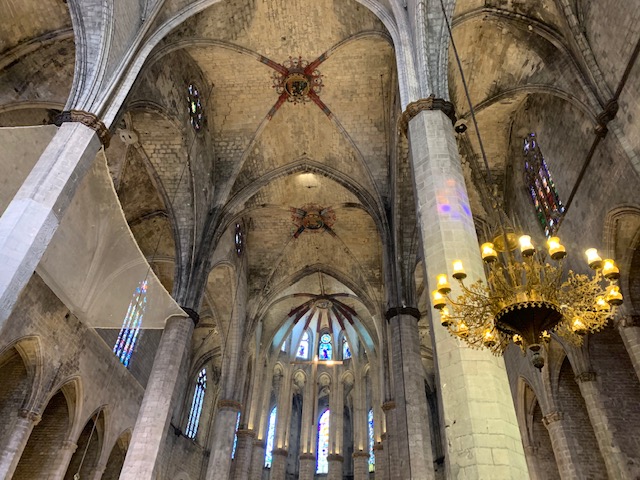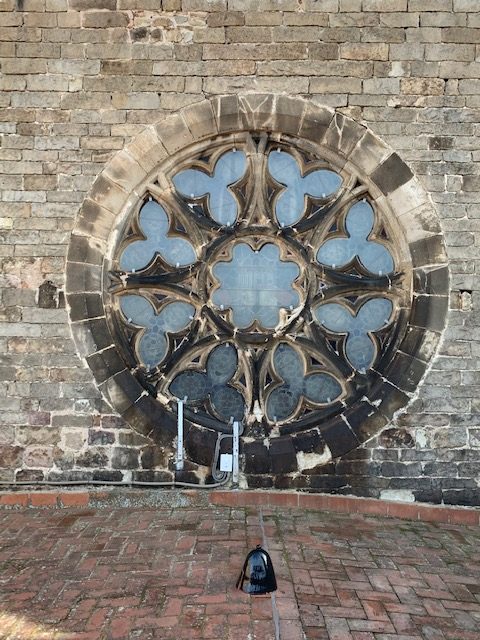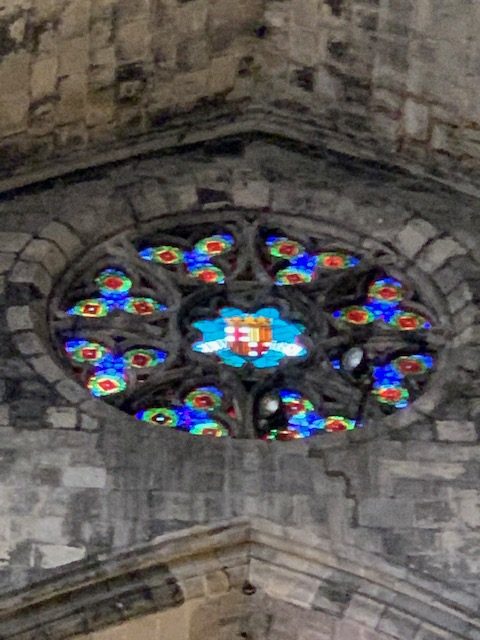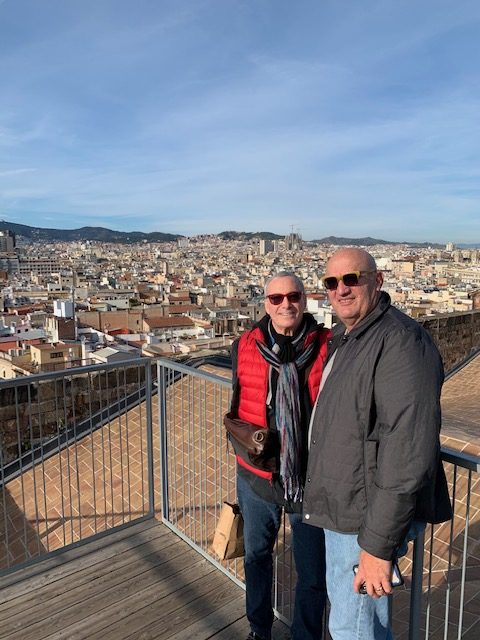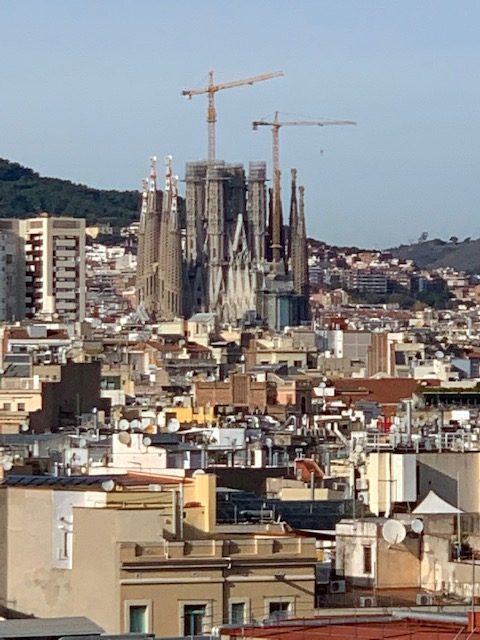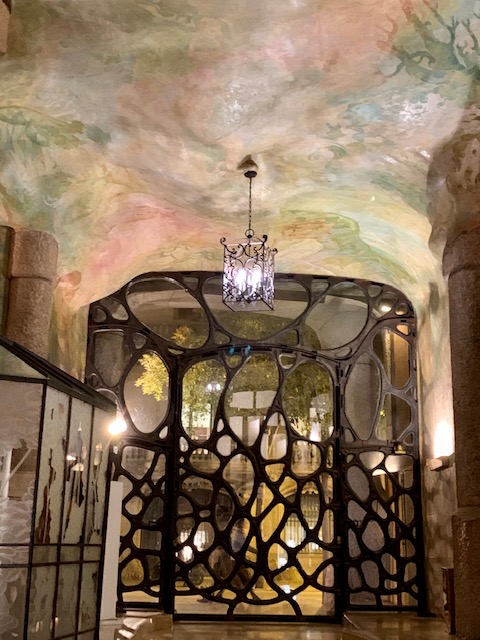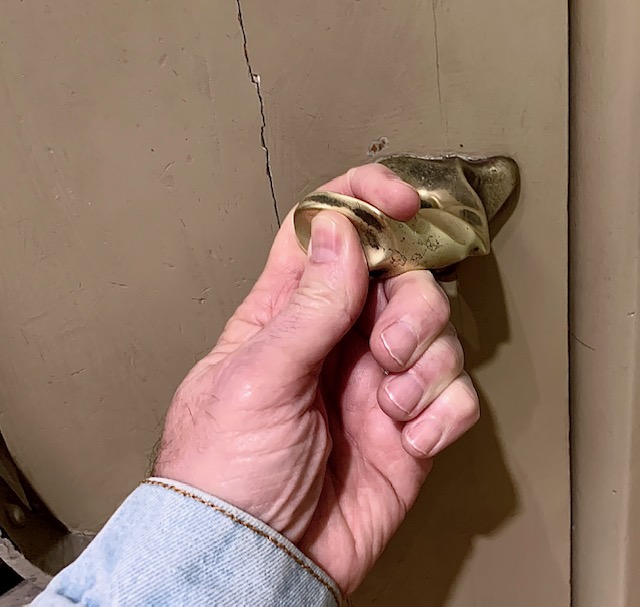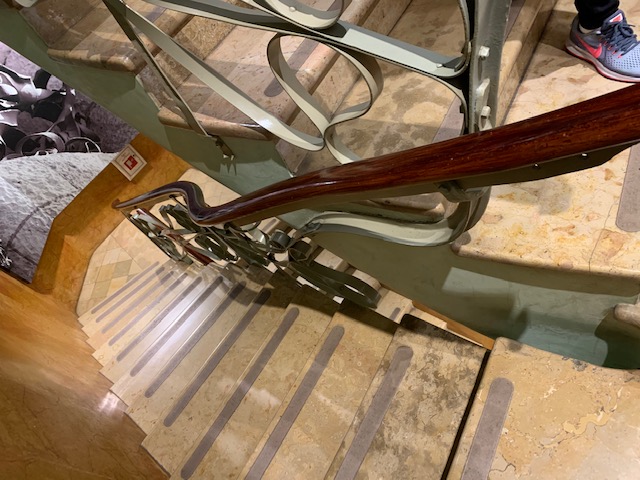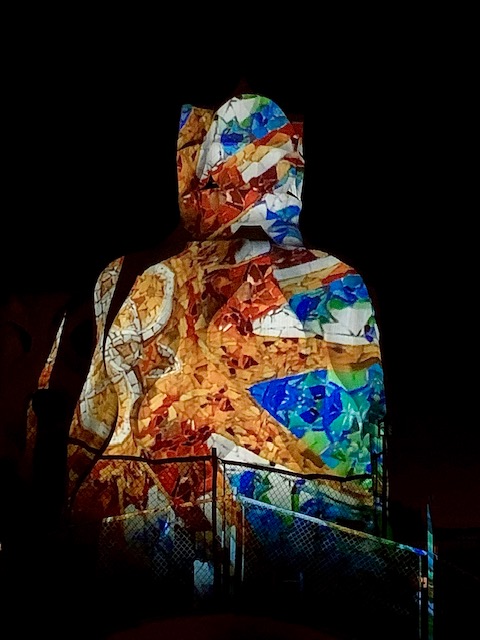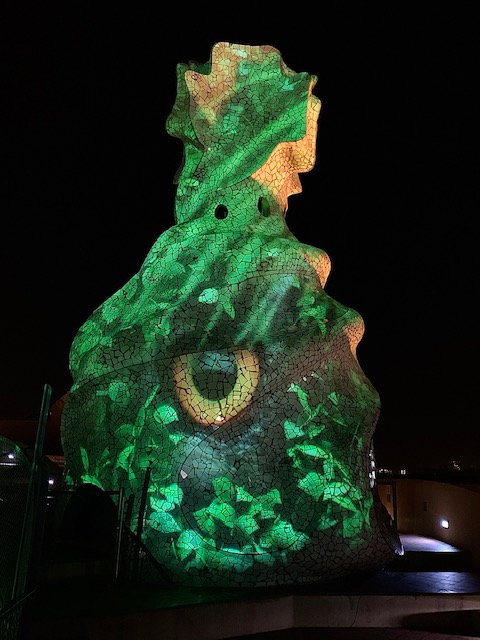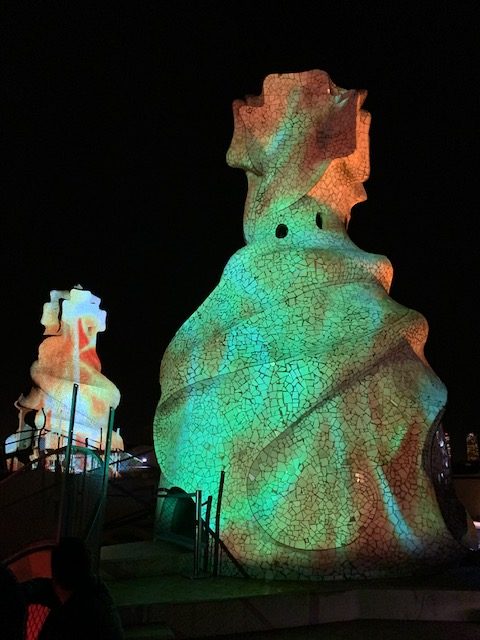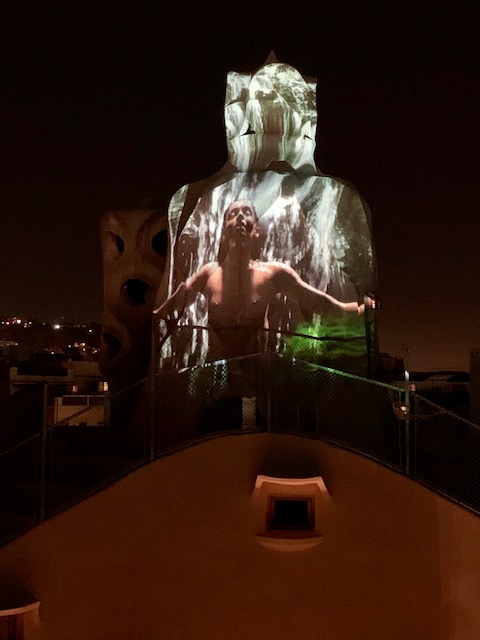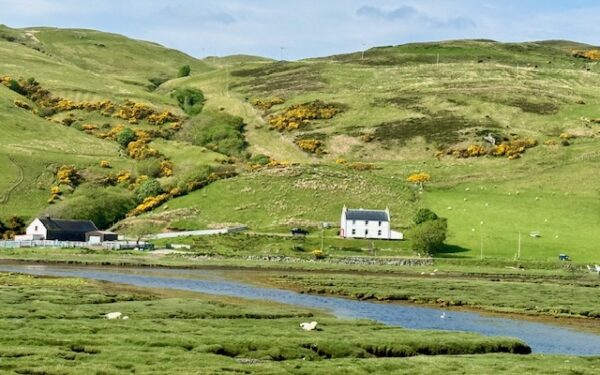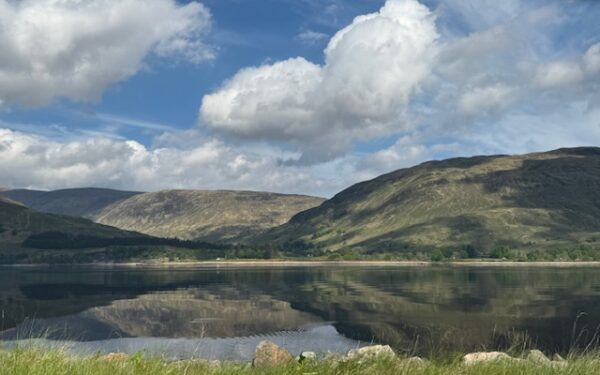“The straight line belongs to men, the curved one to God.” Antoni Gaudí, architect

It was a day tossed between gothic and modernism, and of contrasts: the beauty of simple Santa Maria del Mar church and the elegant curves of Gaudí’s Casa Milà or La Pedrona.
The day’s adventure began … losing ourselves wandering through the narrow alleyways of the old section of Barcelona. We discovered remnants of ancient Roman walls, arches and aqueduct. If these walls could talk … Our goal was to find the gothic church that I first read about in a book and was turned into a Netflix miniseries last year, “La Catedral del Mar.”
It happened that this area now has some beautiful artisan shops, some of which had the creators openly working in the back on jewelry, leather or cloth. David’s eyes darted from one high-concept shop to the next. We walked into some and found that the quality and design of the pieces matched their price.
Two shops wowed us over … the confectioner’s window display of pastries and chocolates were worthy of a Tiffany window, but what caught my attention was the beautiful and colorful cupcake sized merengues. They screamed out, “Buy ME!”
An old candle shop, older than the U.S., was housed in an elegant space that contained a central stairway leading up to a mezzanine, flanked at the bottom by two large statues. The colors and the way the candles were displayed gave you the feeling of having stepped back in time; the attentive service and the manner in which your purchase was scrupulously wrapped in white crisp paper displaying their logo … all made for a very pleasant shopping experience. What did you think ~ that David would walk into a candle shop and leave empty handed?!
Soon enough, a local pinxos ~ tapas bar enticed us in for a fuel stop of beers and tapas; then onward towards finding that gothic church …
Santa Maria del Mar (Saint Mary of the Sea), a church in the Ribera district of Barcelona, built between 1329 and 1383, is an outstanding example of Catalan Gothic, with a purity and unity of style that is very unusual in a large medieval building.
What’s so amazing is the church was built in its entirety by all the guilds of the Ribera; which it meant the people built it. It has suffered it shared of maladies, first in 1379 a fire damaged important parts of the works. The 1428 Catalonia earthquake caused several casualties and destroyed the rose window in the west end. Many of its decorative richness, images and Baroque altar were destroyed in a fire set by anti-clerical rioters at the beginning of the Spanish Civil War in 1936. The church survived even though it was on fire for 11 days. Today you can still see remnants of fire and smoke damage throughout.
Some visual highlights:
From the outside, Santa Maria gives an impression of massive severity that
belies the interior. Inside, in contrast with the exterior, there’s an
impression of light and spaciousness. Abundant daylight streams in through the
tall clerestorey windows.
The interior is almost devoid of imagery of the sort to be found in Barcelona’s other large Gothic churches. Our guided tour included a steep, long hike up the spiral staircase in the tower. Huffing and puffing, we were rewarded with spectacular 360 degree views of Barcelona spread out along the Mediterranean.
On our evening stroll towards Gaudí’s house tour, we’d come face to face with a large, vocal demonstration/march against spousal abuse … a very big problem in the Spanish chauvinistic society. The demonstrators, 99.1% female, marched down the breath of Passeig de Gràcia, one of the city’s main high end shopping boulevards.
The night tour of Casa Milà, popularly known as La Pedrera (the stone quarry), a reference to its unconventional rough-hewn appearance, is a modernist building set along the aforementioned street, Passeig de Gràcia. It was the last private residence designed by architect Antoni Gaudí and was built between 1906 and 1912. It was declared a UNESCO World Heritage Site in 1984.
Like everything Gaudi envisioned, it didn’t follow the rules of conventional style, for which he received much criticism; such as its undulating stone facade and twisting wrought iron balconies. Several structural innovations include: a self-supporting stone façade, a free-plan floor, underground garage and the spectacular terrace on the roof.
A 7-story climb up La Pedrera’s stairwell followed the tour intro (s’more huffing and puffing). Small details: the stair banisters are undulating, the door handles are ergonomic (even for lefties)… there’s barely a straight line anywhere onsite. Before reaching the rooftop, we stopped in the attic, the original laundry room for the building. Its ceiling is vaulted with different heights … you get the feeling that you’re walking under the skeletal frame of a huge animal. Personally I felt like Pinocchio being swallowed by the whale.
Up on the roof with its wildly-formed chimneys known as espanta bruixes (witch scarers!) … 28 chimneys in all. They didn’t look as much as witches as a garden of warriors. Then the outdoor light show began … 20 minutes of bold, colorful images from the creation to the present were projected onto the four largest chimney giants. It was a sight and sound extravaganza as your eyes quickly darted from one to the other as the images changed and evolved … a breathtaking experience and feast for the eyes.
On the Menu … pinxos for lunch, pinxos for dinner … they’re the small appetizers bites found at the bars, pricked with a toothpick (#toothpicks = food tab). You pick, you eat, you drink ~ how easy and delicious is that?
